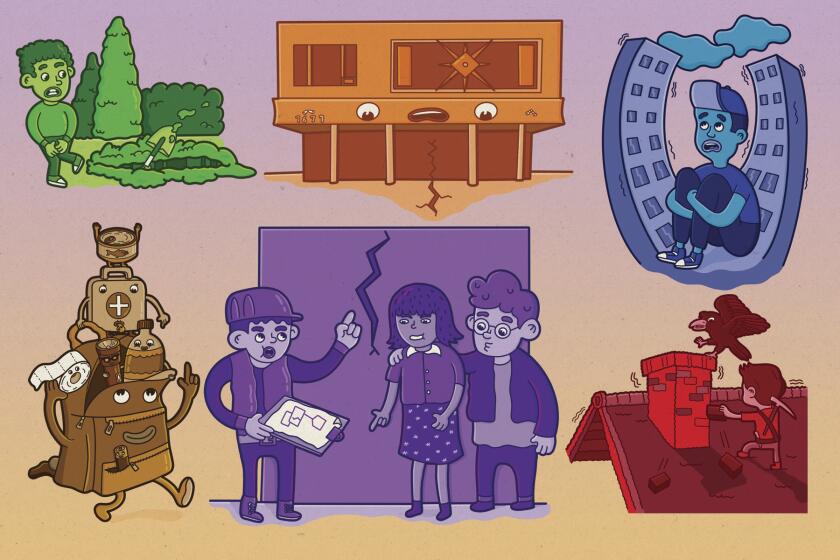Japan and Mexico have earthquake early-warning systems. How does California’s compare?
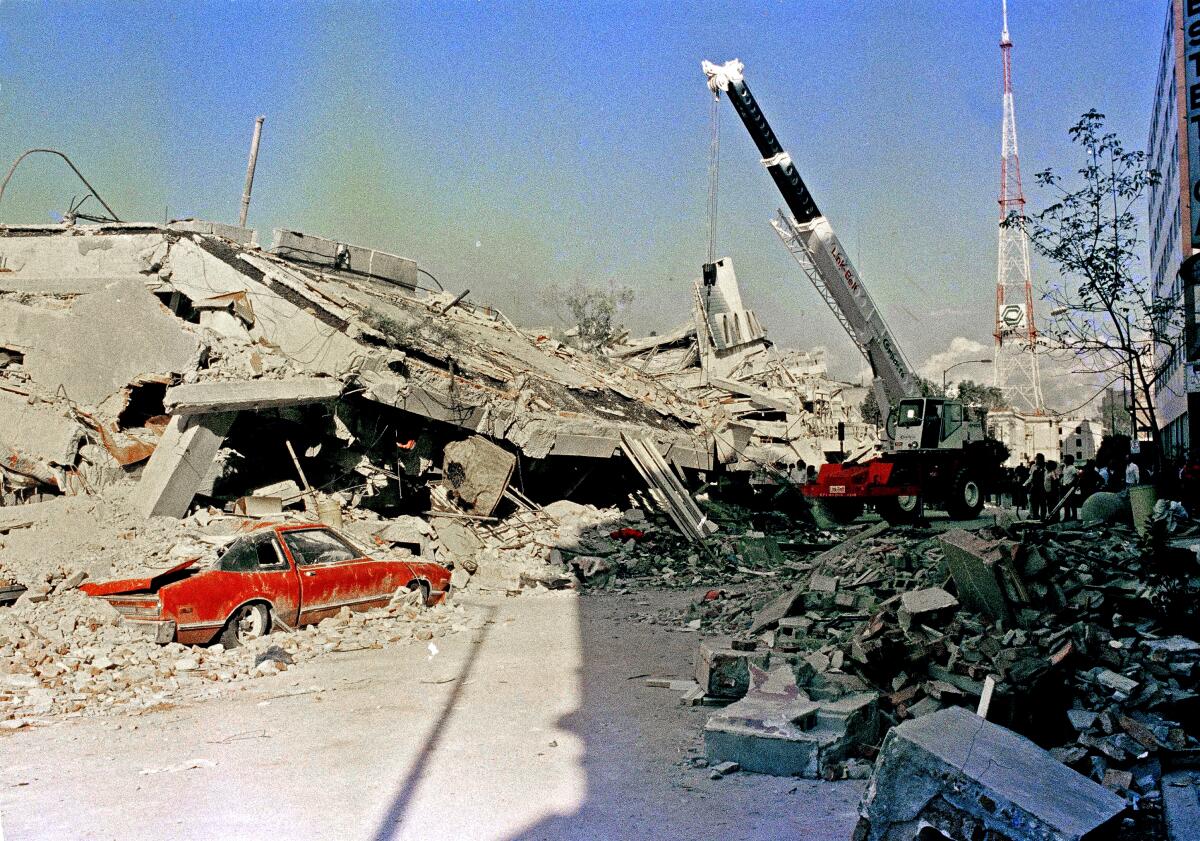
- Share via
When it comes to building a state-of-the-art earthquake early warning system, California is behind.
California and the U.S. have long neglected the development of such a system. The alarm system we do have still isn’t integrated into as much infrastructure as it might be. And the concept is still not universally understood by the public.
By contrast, earthquake early warning systems in Japan and Mexico are part of the fabric of daily life — with the public understanding their lifesaving potential while accepting their inherent limits.
In Japan, earthquake early warnings have become well-integrated across society, with warnings automatically piped to cellphones, television and radio. In Mexico City, a ubiquitous network of sirens blares moments after a large temblor is detected to give residents time to seek safety before shaking arrives.
Yet California and the rest of the West Coast are still figuring out what exactly to make of the U.S. Geological Survey’s ShakeAlert earthquake early warning system. It began issuing public alerts in L.A. only about 2½ years ago; expanded to the rest of California a year later; and then this year expanded to Oregon and Washington state.
Ironically, one of California’s blessings is that earthquakes are less frequent here than in Japan and Mexico. The last time an earthquake and resulting fire killed thousands of people in California was the 1906 San Francisco earthquake. By contrast, Japan and Mexico have had much more recent devastating quakes and related natural disasters that each killed thousands of people — Mexico’s 1985 earthquake and, in Japan, the 1995 Kobe earthquake and the 2011 magnitude 9.1 earthquake and tsunami.
But that means it will be harder for Californians to train themselves on how to react to an earthquake early warning before the Big One hits.
“Our earthquake rates are generally lower. And so it’s not really top-of-conscious for a lot of the public along the West Coast of the U.S.,” said Elizabeth Cochran, seismologist for the U.S. Geological Survey, who has spent many years as the chief scientist for the agency’s earthquake early warning project. “And so we essentially have to develop ways to make sure that we’re getting our messages out regularly so people know what to do with the system when the eventual earthquake happens. And I don’t think that’s as necessary in either Mexico or Japan.”
The Times embarked on an effort to understand how earthquake early warning systems have changed how the public anticipates earthquakes in Japan and Mexico. First, we’ll look at how the public interacts with the systems in both nations. Then, we’ll explain how the science of the U.S. West Coast system differs from theirs and the particular challenges the U.S. system faces.
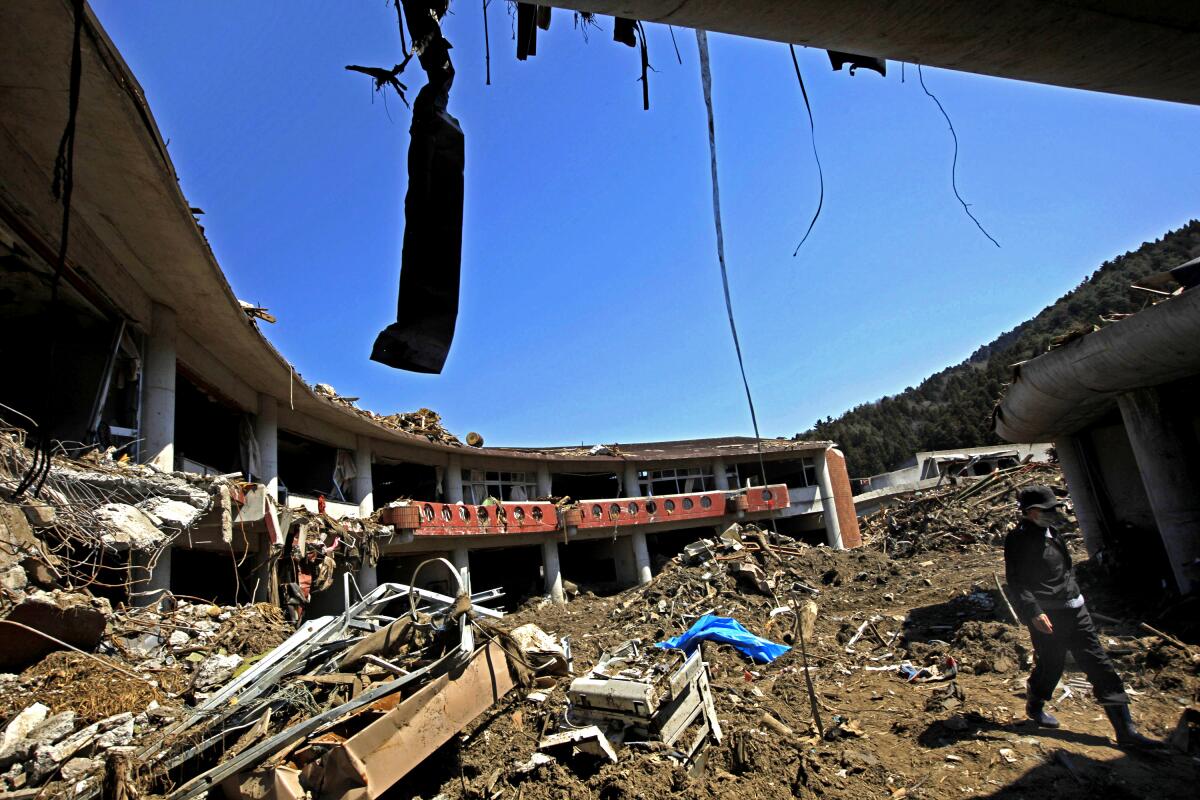
In Japan, earthquake warnings get drilled into a routine
On the first day of spring this year, Toru Uzurahashi was cooking dinner at his home in Sendai, Japan, when his phone began emitting a distinct chirp most Japanese have come to know intimately.
He turned off the gas and quickly ran through his family’s whereabouts in his mind. He shouted to his daughter upstairs to make sure she was ready.
A few seconds later, the strong shaking arrived. The magnitude 7 temblor toppled a glass and swirled around the broth in the nabe dish he was cooking — but otherwise left most of his home, and nerves, intact. He and his daughter proceeded to sit down to dinner.
His nearly instantaneous reaction, built on a decade of experience, was second nature in a way it wasn’t in 2011, when his city was hit with the most severe earthquake in Japan’s modern history. At the time, he spent precious seconds wondering what that piercing sound was coming from his cellphone and those of his colleagues.
His phone’s alert is part of a nationwide earthquake early warning system Japan implemented in 2007 and has been improving ever since, a process that has involved devastating quakes, major false alarms and one of the most extensive public education campaigns in the country’s history.
Japan’s experience shows that getting the system up and running is only half the battle; the other half is getting the public to familiarize themselves with the alerts, what they signify and what to do when they receive them.
Uzurahashi, who had a friend who worked on earthquake warnings, said he was more aware of the system than the average person. Even so, the first few times he heard the alarm, he found himself disoriented and confused.
“Knowing about the system on paper is quite different from experiencing it,” said Uzurahashi, 63, a university administrator from Sendai, where more than 15,000 people were killed in the earthquake and tsunami in 2011.
“The first few years, nobody paid attention,” said Masumi Yamada, assistant professor at Kyoto University’s Disaster Prevention Research Institute, who has worked on technical improvements to Japan’s system since 2011.
A 2010 survey found that only half of those queried in the Tokyo metropolitan area said they were aware of the alerts and what they meant and less than 40% knew to anticipate that strong shaking was about to hit. That dramatically changed after the 2011 earthquake and the numerous aftershocks that followed. By the summer of 2011, 90% of those surveyed said they were aware of earthquake early warnings and their significance. Those who were completely unaware dropped to less than 2%, from 15%.
“Once you experience, you will learn,” Yamada said. “It’s very hard to imagine something which has never happened.”
“Once you experience, you will learn. It’s very hard to imagine something which has never happened.”
— Masumi Yamada, assistant professor, Kyoto University Disaster Prevention Research Institute
The warnings remain popular in Japan despite false alarms and errors. In 2011, the alert underestimated the magnitude of the main earthquake and inaccurately forecast some of the aftershocks because some of the sensors lost power or misinterpreted data.
Mitsuyuki Hoshiba, an earthquake scientist with the Japan Meteorological Agency, which runs the system, said on about three occasions over the years, officials have had to apologize to the public for false alarms and explain what went wrong. The public seemed to understand and to continue supporting their efforts, he said.
“I think people think that even if it’s sometimes right, sometimes [an] over-prediction, it is much better than no information,” he said.
Tomomi Higuchi, a 40-year-old university employee and a colleague of Uzurahashi’s, recalled being on a business trip in Kobe with three students in the summer of 2013 when she received a warning for a 7.8 magnitude quake in nearby Wakayama prefecture. She ran out of the hotel and waited for the shaking to arrive. None came.
It turned out to be a magnitude 2.3 earthquake, misinterpreted due to inaccurate GPS data and time stamp. Trains were stopped, cellphone signals jammed and websites crashed. One official said it was “probably the biggest” misreading in the system’s history.
People are much more important than kits. People will help each other when the power is out or they are thirsty. And people will help a community rebuild and keep Southern California a place we all want to live after a major quake.
Even so, Higuchi said the false alarm didn’t diminish her faith in the system because officials explained what went wrong and that it was just 15 minutes of anxiety standing on the curb outside the hotel — something she felt was a small price to pay for the warning’s benefits.
When she got the alert for this March’s magnitude 7 quake, she got under the dining table and held on to the legs.
“It’s only a few seconds before the shaking that you get the warning sign, but because you get this warning you’re able to protect your body against hazards,” she said. “I find it quite helpful.”
Hoshiba, the JMA researcher, said scientists working on California’s earthquake early warning system repeatedly asked him about what cost-benefit analyses Japan had gone through before the extensive investment in developing what is now by far the world’s most extensive and sophisticated system.
Japan has more than 4,000 seismometers, many of them on the ocean floor. Thus far, the U.S. system is made up of 1,115 stations in California and 560 in Washington and Oregon.
“It’s a tough question for me,” he said. “In our country ... we don’t have such a culture to evaluate cost of human life. How much is a life? It is a difficult question for us.”
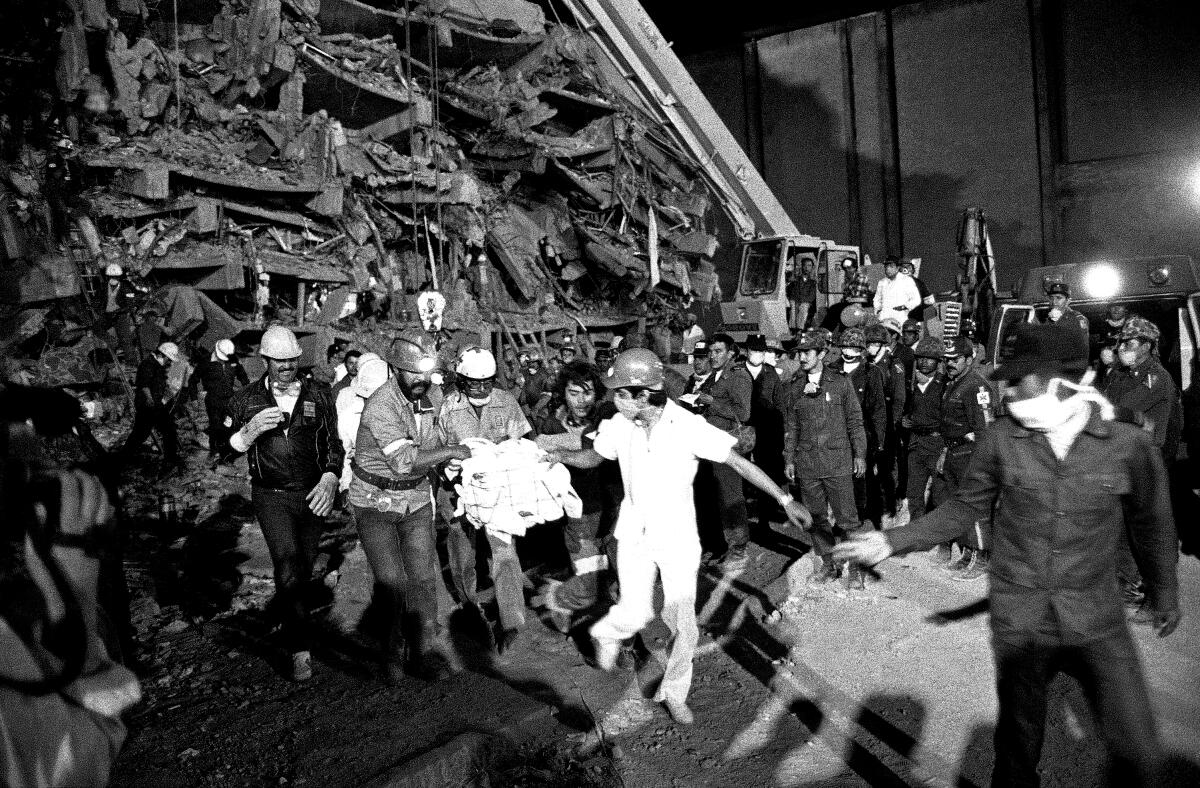
A ubiquitous siren system in Mexico City brings comfort
Mexico’s early warning system was born in the wake of a tragedy — a magnitude 8.1 earthquake that killed more than 10,000 people in Mexico City in 1985.
This city, built atop an ancient lakebed drained centuries ago by Spanish colonizers, is particularly susceptible to earthquakes, even those that strike hundreds of miles away. That’s because many of the city’s densest neighborhoods sit atop layers of sand and clay, which magnify shaking, instead of bedrock.
The epicenter of the 1985 quake was 220 miles west of the city, on a major fault along the Pacific coast. It took two minutes from the time shaking began for the waves to reach the capital.
Seismologists realized that if they had been able to detect the quake quickly, they could have alerted people in the capital, giving them crucial time to seek safety.
“It was a simple mental exercise,” said Gerardo Suárez, a seismologist at the National Autonomous University of Mexico. “If we could detect earthquakes on the coast, we could send a signal to the city.”
The alert system started running in 1991. Three decades later, the creepy, low drone of the earthquake warning alarm, which blares from loudspeakers the moment a large temblor is detected, has become a normal part of life in the capital and has even been remixed into a dance song and a cumbia. When people hear it, they rush out of their homes and buildings out of fear that the structures won’t withstand the shaking.
The system in Mexico is less complicated than the USGS’s ShakeAlert, which sends out an alarm based on an algorithm that seeks to predict how strong shaking will be in any given place. The Mexican system simply alerts for every large earthquake it detects. That means that sometimes it alerts for earthquakes that don’t pose a real threat to the city. But many say they prefer to be alerted even if there is no real danger rather than missing an alert when the danger is real.
Get earthquake-ready in six weeks
From building a kit to buying insurance, our Unshaken newsletter course will help you prepare.
You may occasionally receive promotional content from the Los Angeles Times.
“Honestly I prefer the anger of saying, ‘It failed again,’ than when there really is an earthquake, the alarm doesn’t ring and you’re caught off guard,” said Edgar Beltrán, a 52-year-old businessman in Mexico City.
“If you hear the alarm and have the opportunity to protect yourself, it can save your life,” he said.
“We can see most people want to have an alert,” said Allen Husker, a seismologist at Caltech who worked for 15 years in Mexico City. “They’d prefer to have something than not have it.”
The early warning system, however, can prove disappointing if an earthquake begins rupturing a fault too close to your location. Mexico’s devastating 2017 earthquake occurred too close to Mexico City to allow for most people there to get enough advance warning to take useful action, Cochran said. And in some areas of the capital, no warning came before heavy shaking hit.
But scientists do expect that the warning system will prove immensely helpful when a huge earthquake ruptures in the ominous Guerrero seismic gap, a 125-mile-long zone that hasn’t ruptured in a major earthquake since 1911, which could provide substantial warning to Mexico City before heavy shaking waves arrive and resonate and slosh in the capital’s basin.
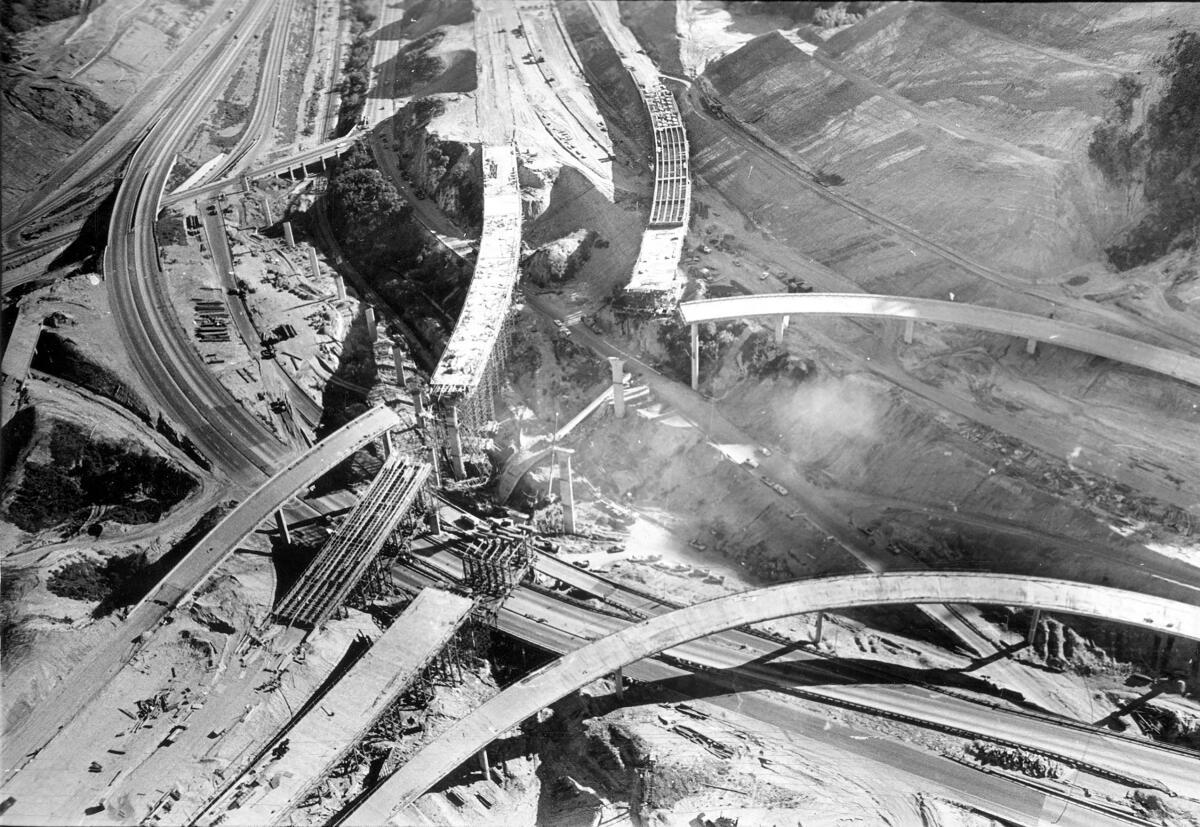
The challenge for California
Compared with Japan and Mexico, an earthquake early warning system designed for California was technically far more difficult to build.
The biggest, longest faults that threaten Japan and Mexico are off the coast of both nations.
By contrast, two of California’s largest metro areas — the Greater L.A. region and the San Francisco Bay Area — are perilously close to the world-famous San Andreas fault, capable of generating earthquakes greater than magnitude 8. The San Andreas runs directly through the Inland Empire and Palm Springs.
That means California’s system had to be much quicker and more sophisticated — to first detect shaking waves and then trigger an alert — to be helpful as a warning.
“That’s the real difficulty with the system for California, because the faults obviously crisscross right underneath our feet — across L.A., across San Francisco,” Cochran said. “So part of the focus of the design for the ShakeAlert system is how we can very, very quickly detect the events, and use ... as little data as possible to get a quick estimate of what the shaking is going to be across the area and update that as the earthquake unfolds.”
One urgent challenge for California is figuring out how to get the alerts to more people.
Right now, the alerts can get to you fastest if you’ve downloaded an app on a smartphone, such as the MyShake app developed by UC Berkeley or the QuakeAlertUSA app by Santa Monica-based Early Warning Labs. Google’s Android cellphone software system is automatically linked up to the earthquake early warning system, but no such feature exists for iOS on Apple devices.
It would also be more helpful to get the earthquake early warning system integrated with more infrastructure. Public transit systems, for example, could prompt bus drivers and train operators to slow down or stop before shaking arrives. Elevators could be programmed to stop at the nearest floor, sparing occupants from being trapped for hours.
“Even if you had a few seconds to kind of make sure your elevator gets to the next floor and opens the doors, you’re saving a whole lot of” resources once the main quake has ended, such as freeing up firefighters to make other rescues, Cochran said.
Times staff writers Victoria Kim and Kate Linthicum reported from Seoul and Mexico City, respectively. Staff writer Rong-Gong Lin II reported from San Francisco. Cecilia Sanchez from the Times’ Mexico City bureau contributed to this report.
When the Big One hits, will Californians be ready for a lack of modern communication connections? Extended periods without essential utilities such as water and gas? Damage to homes? The mental health effects that often follow disaster?
More to Read
Get earthquake-ready in six weeks
From building a kit to buying insurance, our Unshaken newsletter course will help you prepare.
You may occasionally receive promotional content from the Los Angeles Times.

